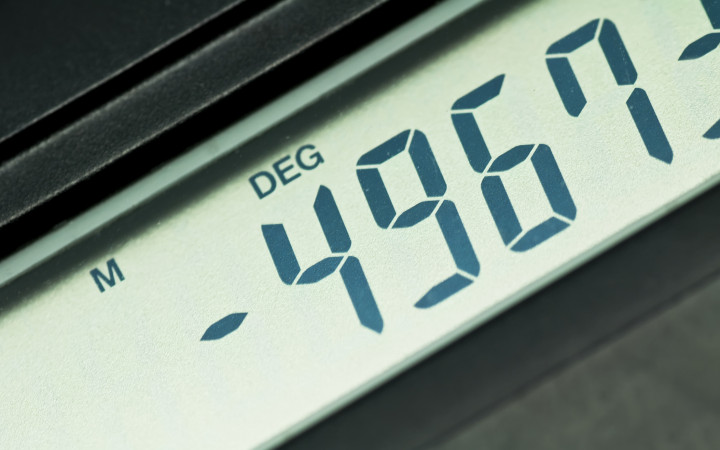Today’s Wonder of the Day was inspired by Sofia. Sofia Wonders, “If you are in the negative numbers, like if you have a negative one third of a cake, how is it possible that you can have less than zero of it?” Thanks for WONDERing with us, Sofia!
Have you ever read a thermometer on a cold winter morning? If you have, you might have seen a negative number. In many places, it’s normal for a winter morning to be -15° F or even -20° F. In Antarctica, it gets as low as -128° F!
Does this make you WONDER how a negative temperature is even possible? How can negative numbers exist?
You’re not the first to ask that question! European mathematicians rejected negative numbers for ages. They didn’t think negative numbers made any sense. However, people in India and China have been using negative numbers for millennia. Eventually, the Europeans came around, and we use negative numbers everywhere today.
Negative numbers make more sense if we look at a number line. On a number line, all the numbers to the right of zero are positive. If we move to the left of zero, they become negative:
We end up with a negative number by subtracting a larger number from a smaller one. For example, if we subtract nine from eight, it looks like this:
8 - 9 = -1
There are plenty of other rules for using negative numbers in math. Have you heard that two wrongs don’t make a right? That may be true, but two negatives do make a positive! When we subtract a negative number, the subtraction sign is right next to the negative sign. That means we can replace them with an addition sign. Here’s what it looks like when two negatives make a positive:
0 - -3 = 0 + 3 = 3
This rule also applies in multiplication. When we multiply two negative numbers, the answer is always positive:
-5 × -2 = 10
Negative numbers might seem mysterious in math problems. For many people, real-world negative numbers make more sense. Remember that cold morning when you read the thermometer? The negative numbers helped you understand how cold the weather was. Think of the thermometer as a number line. If the thermometer was in degrees Fahrenheit, then the freezing point was 32° F. If the temperature was -15° F, then it was 47 degrees below freezing. In Celsius, the freezing point is 0° C. That means -15° C would be 15 degrees below freezing.
Have you ever studied maps or geography? If so, you may have heard of altitude. Altitude tells us how far above or below sea level a place is. For example, the peak of Mount Everest is 29,029 feet above sea level. Badwater, California is the lowest point in the United States. Its altitude is -282 feet! That means that if Badwater Basin were closer to the ocean, it would be under water.
One last way to think about negative numbers is to look at a bank account. When a person spends money, banks use negative numbers to record transactions. If a person spends $10.50 on a movie ticket, the movie ticket will show up on his or her bank account as a negative number (-10.50). That way, the bank knows to subtract $10.50 from the account.
Negative numbers are sometimes confusing when we first learn about them. The rules can be hard to remember! Like everything else, understanding negative numbers gets easier with practice. Can you think of any other real-world examples of negative numbers?




